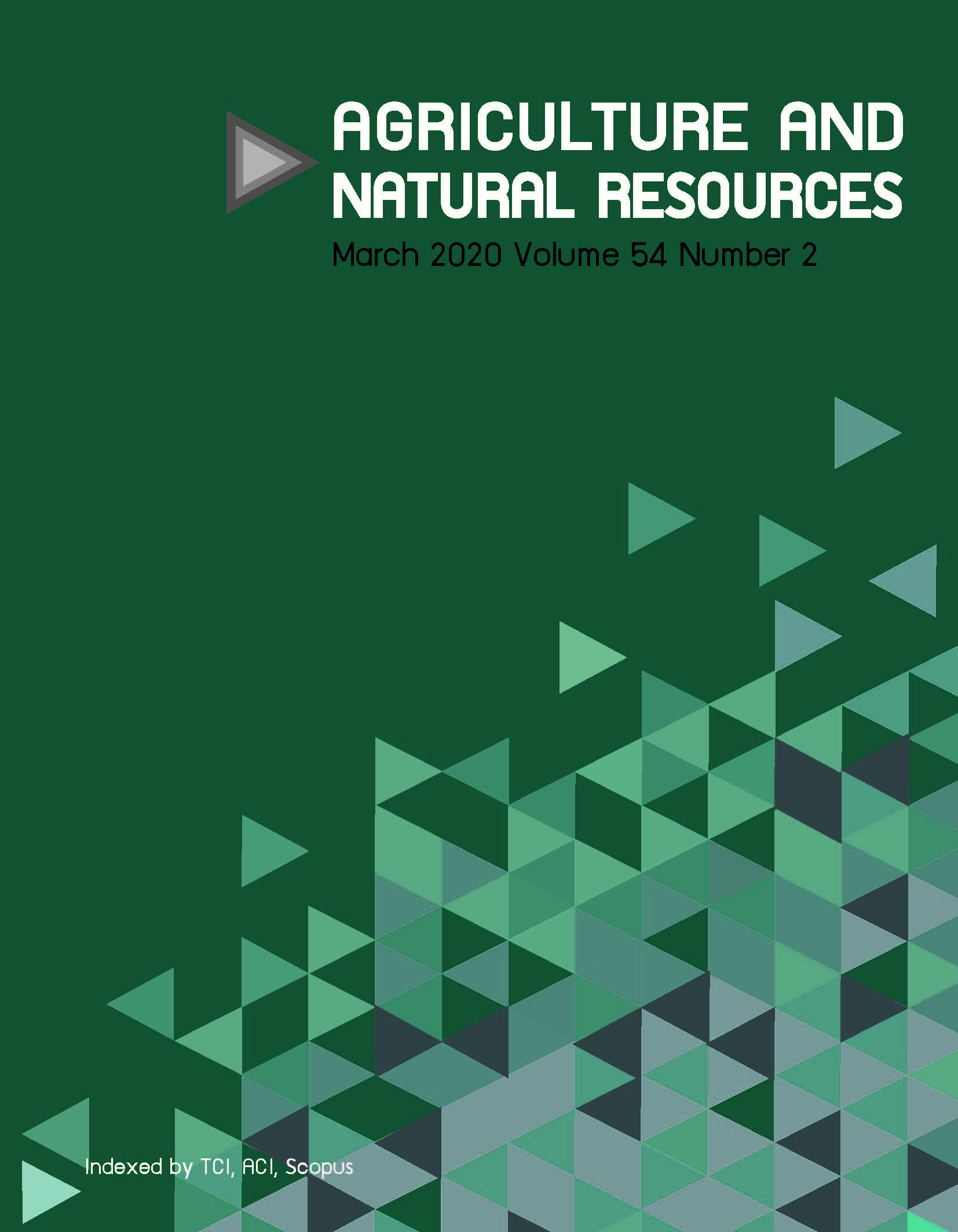The ovarian structure and oogenesis of the pea crab Pinnotheres cyclinus Gordon, 1932: A histological investigation
Keywords:
Histology, Microanatomy, Oocyte, Ovary, ThailandAbstract
The pea crab Pinnotheres cyclinus is a parasite of cultured mollusks. However, the information on reproductive histology of this crab has remained limited. Therefore, the present study investigated the ovarian structure and oogenesis of Pinnotheres cyclinus during maturation using histological techniques. Histologically, the ovary of this crab was found to be surrounded by a thin epithelium and connective tissue of the ovarian wall. Different phases of oogenesis were observed in the germinal area and could be classified into four phases: oogonial proliferation, the primary growth phase, the secondary growth phase, and the atretic oocyte phase. An oogonium was located in the ovarian cyst of the ovarian lobe, which was surrounded by a layer of pre-follicular cells. During the primary growth phase, oogonia continued to develop in the ovarian cyst, accumulating lipids
and cortical alveoli. The appearance of spherical yolk granules related to changes in follicular cells during the secondary growth phase was also observed. These yolk granules reacted positively to Masson’s trichrome and Mollary’s trichrome staining, implying the presence of mucopolysaccharides and glycoproteins. Atretic oocytes were also found. Stages of embryonic development were also observed, including the formation of egg membranes covering embryos. Consequently, a fertilized egg was then filled with yolk granules, which all gradually combine to become one within the egg.
Downloads
Published
How to Cite
Issue
Section
License
Copyright (c) 2020 Kasetsart University

This work is licensed under a Creative Commons Attribution-NonCommercial-NoDerivatives 4.0 International License.
online 2452-316X print 2468-1458/Copyright © 2022. This is an open access article under the CC BY-NC-ND license (http://creativecommons.org/licenses/by-nc-nd/4.0/),
production and hosting by Kasetsart University of Research and Development Institute on behalf of Kasetsart University.







